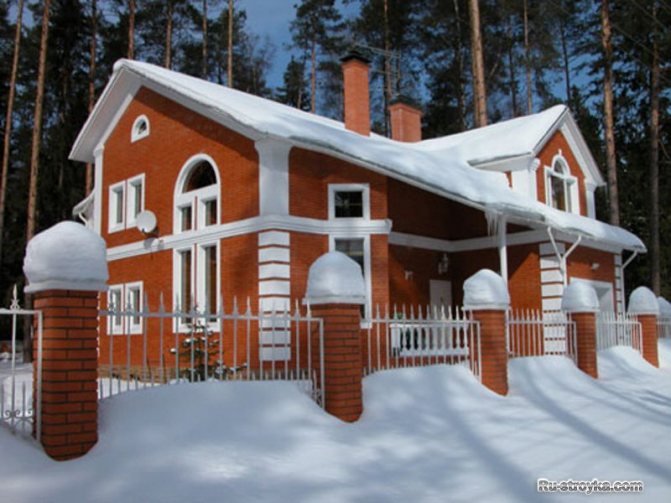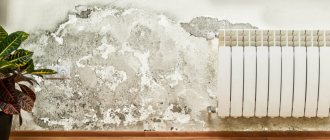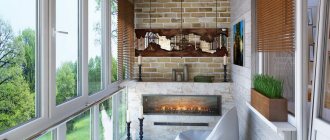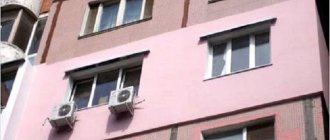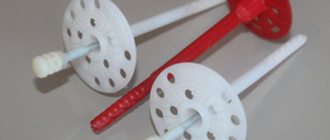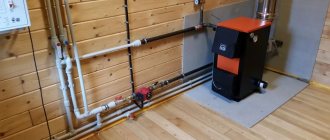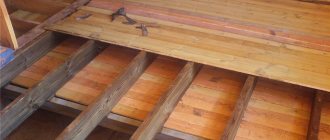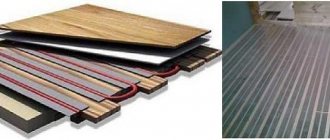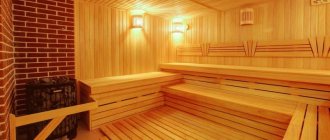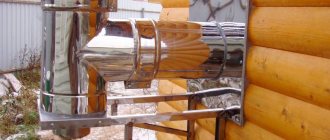Home / Articles / Causes of mold on the walls of an apartment / What you need to know when ordering sealing joints? / Repair of interpanel seams and the technology of their insulation / How to determine the series of a house and calculate the volume / How to close up interpanel seams in an apartment / Sealing of seams - determining the price / Who should repair interpanel seams in a house / How to force the UK to close up interpanel seams? / Are the walls freezing in a panel house what to do? / Typical mistakes in sealing joints between panels / How is the technical condition of interpanel joints, roofs and balconies inspected? / Frequently asked questions about sealing seams, what do the seams do? / How to get rid of fungus and mold on the walls of an apartment / How to properly insulate interpanel seams in a panel house? / Album of technical solutions: insulation and repair of open and closed joints / Technical instructions for sealing the joints of prefabricated buildings with polymers
Mold can be found in any home. And since among modern building and finishing materials it is almost impossible to find those that have not been influenced by mold, the fungus can be found even in the refrigerator or in the washing machine. Mold can eat a room, there are fungi that can easily destroy iron and brick. What can we say about the human body! The fungus will quickly destroy health, especially in children. With the problem of mold, defects in the interpanel seams will surely appear. Black-spotted slopes, crying plastic windows, dampness and health problems - all this worries our readers. A wet wall and fungus are the main signs of a seal failure.

The cause of fungus is constant high humidity.
In autumn, when the central heating is not yet connected, atmospheric moisture accumulates in the apartments, which is maintained by the sweating of the walls. Before removing the fungus, it is necessary to establish the source of moisture that feeds the fungus. Often an unpleasant "blooming" of walls appears after renovation in closed rooms. If it is not possible to ventilate the square meters, signs of freezing appear in the corners of the street walls, or humid air enters through the cracks, then a comfortable stay cannot be achieved. Therefore, of course, the reasons must be eliminated, then the fungus will stop developing without moisture replenishment. Getting rid of the fungus is easy. Intensive ventilation is carried out, with furniture moving away from the walls in order to improve air convection.


Reasons for the appearance of mold in a panel house
The main reason for the development of fungal colonies in the apartment of such a house is insufficient processing of the seams between the panel blocks through which moisture penetrates. And in an apartment, under favorable conditions, mold quickly captures new territories:
- window openings;
- corners on the ceiling;
- wallpaper;
- flooring.


The growth of the fungus is facilitated by the installation of plastic windows in the apartment of a panel house. This disrupts air exchange. This is especially evident in winter, when the air stagnates and cools down near the window. Droplets of moisture are formed, which, in fact, contribute to an increase in the level of humidity.


Panel slabs are not very thick, so thin walls can also be classified as factors that contribute to the spread of fungus. Condensation forms in the thickness of such a wall.
To protect the apartment from constant high humidity, insufficient heating of the room in winter, ensure good sealing of the seams, which can only be achieved as a result of major repairs.


Is mold on the wall dangerous?
Everyone knows that mold spoils the aesthetics of a room, but many do not even suspect that it is harmful to health with its fumes. It is mold that can provoke coughing and allergic reactions of the body, cause digestive upset from eating food stored in a room affected by mold.
Getting into the respiratory tract with constant moisture, it cannot but create a feeling of discomfort, which is quite difficult to get rid of without a course of inhalations. And it's good if the cure is limited to this. Prolonged exposure to mold-infested premises causes more serious harm.
Why is the wall outside the house getting damp
Among the main reasons for the dampness of the outer surface of a brick wall:
- microcracks in the masonry;
- high thermal conductivity of the wall.
Microcracks in mortar or brick cause rainwater or melted snow to penetrate the interior of the wall. In order to find out exactly whether this is the reason for the dampness of the outer surface of the wall, it is worth watching it during rain or snow. The problem can be eliminated with a hydrophobic impregnation.
High thermal conductivity is the most common reason for dampness of walls. It is also very easy to define it. In frosts, such a wall inside the house will be very cold, and outside it may become covered with frost. The only solution to the problem is to insulate the outer surface of the wall.
Why is the wall of a brick house damp
Mold growing on the walls and its spores
Mold cannot be underestimated in terms of health risks, since it not only releases enzymes - we perceive them as a specific odor. There is also a danger of their transformation in the mucous membrane of our body as a result of chemical reactions into toxic compounds. Not all molds are harmless.
Mold enzymes, being in the human body, are capable of such troubles for us as violation of protective processes at the cellular level, and some, mutating, can even disrupt the structure of DNA, affecting heredity.
The weak point of mold is that we can immediately identify the place of its growth and see the source that feeds it.
For example: if mold has developed on the outer wall of the room, then most likely, it feeds on heat through a crack in the wall, and this gap was formed due to a defect in insulation or lack thereof,
In newly built buildings, the reason for dampness is excessive moisture saturation and dryness of the structure after the completion of work. And also new heaters: they keep warm for a long time, but the dew point moves. Mold can even appear inside the panels, and then the new building will "rot".


These mold colonies are eliminated by industrial climbers, who find the cause and eliminate the mold itself. Once the cause has been eliminated, remove and apply a protective coating, thereby preventing the possibility of recurrence of mold growth. Insulation of houses with a significant service life independently or by amateur teams of a non-professional level is fraught with the fact that sheathing the walls with insulation plates, without sealing cracks and cracks, they involuntarily create greenhouse conditions for mold growth under these plates.
Professional builders perform the same work with preliminary processing of damaged areas of joints of plates and cracks, they will spend the same 1-2 days, but at the same time they will give protection both from dew inside the building and from the growth of mold outside under the cladding of the facade of the house.
The wall in the apartment is frozen: what to do?
When returning home, each person expects a cozy atmosphere, but the feeling of warmth is difficult to maintain in a room with frozen walls. This problem is especially common in old panel houses.
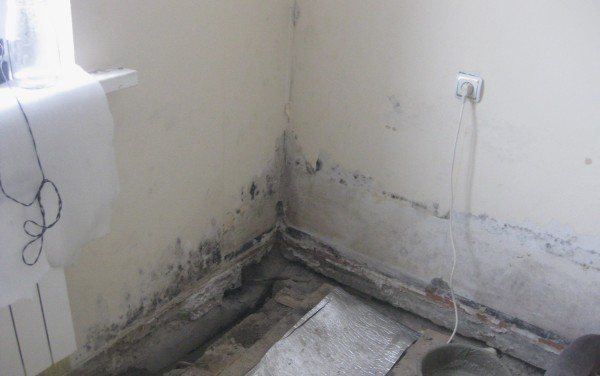

To understand this situation and take measures to correct the deficiency, first of all, it is necessary to identify the cause of freezing.
For this purpose, you need to contact the company responsible for the maintenance of your home (UK or HOA).
After considering the left application, a specialist should be sent to you to inspect the condition of the wall. At the end of the procedure, the landlord or tenant is issued an appropriate act - a document confirming the verification and identification of the cause of freezing.
You can immediately contact a specialized company capable of conducting a thermal imaging survey. This service is provided for a fee, however, it allows you to get a complete picture of the problem. With a written opinion of a specialist, you can contact the Criminal Code (HOA) to resolve the issue of correcting the defect.
Caution dew
This is another reason for the development of mold and mildew. Frozen walls are covered with moisture in the same way as it happens on windows. If there is not enough ventilation in the room, the accumulation of moisture will be inevitable if the heat-insulating properties of the street walls are insufficient.
In case of insufficient ventilation, plastic windows become a factor in the deterioration of safety from mold and mildew. The tightness of the frames and the low thermal permeability of the glass units create a favorable climate for accelerating the development of the fungus.
The fungus is unpretentious to the surfaces on which it spreads. Brick, concrete and wood, plastic are suitable for him. Brick and concrete are easy enough to clean, but wood is porous and there are difficulties with it.
Cleaning wood from fungus is impossible without removing some of the outer layer. Wood shavings are burned. Mold is not so tenacious, but it grows much faster. Mold can destroy 70% of wood in just a year, so preventive treatment with disinfecting solutions is not superfluous, both for structural parts and for furniture.
It is better to decontaminate wooden products not indoors, but before introducing them inside, in order to avoid accidental contamination of other objects or surfaces.
Apply the antiseptic with a paint brush
There is always a risk that a random person will do their job carelessly. But is it better quickly? This improvement can unexpectedly only aggravate the condition of the home.
Therefore, do not accept offers from those who have been recommended to you by your friends or neighbors. It makes sense to trust your neighbors, since the microclimate in your property is similar.
Those living on the ground floors should pay attention to the appearance of mold in the corners of the rooms. Its detection indicates a violation of the waterproofing in the basement. When neglected, mold can spread underneath the flooring. Do not hesitate and do not think that this is a trifle. Be sure to contact the housing and communal services serving your home: at an early stage of infection, fungus and mold can be stopped by cleaning up the basement.
Exactly the same advice can be given to the residents of the upper floor regarding the ceilings. The manifestation of mold indicates a violation of the waterproofing of the attic and the roof and when the interpanel joints in the block and panel house are poorly filled
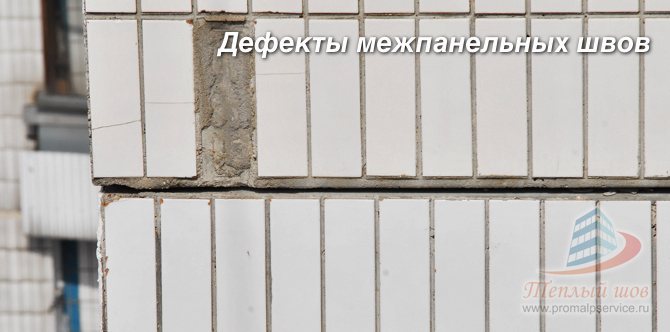

Why is this happening
The reasons for the increased humidity on the walls can be different. Basically, they are divided into internal and external. Most often, the apartment gets wet due to the following circumstances:
External moisture
This problem is typical for apartments located on the upper floors with poor drainage systems.
Water can enter the walls through microcracks or poorly sealed seams. Also, the wall can get damp due to a downspout passing nearby.
To get rid of this problem, you will have to clean the walls from the damp coating, plaster them, prime them, and also cover them with waterproofing mastic.
Such actions can be done independently either in a private house or in an apartment building on the ground floor. In other cases, you will have to seek help from specialists.
Freezing of the wall
This phenomenon occurs when the temperature outside is too low, and the air inside the room is not warmed up enough. Because of this, the walls begin to freeze through, and moisture appears on its inner surface.
Also, the wall can freeze due to the presence of microcracks or leaking joints. To eliminate such a problem, it is sometimes enough to increase the temperature in the room, but additional insulation of the walls will be the most effective way. In this case, it is better to give preference to outdoor decoration.
Excessive moisture
If we are talking about a brick building, then a large amount of moisture is formed from the basement. In other cases, replacement of windows in the apartment can contribute to the appearance of dampness centers. This is explained by the fact that the installed plastic windows are very airtight and close the openings too tightly, therefore, the ventilation of the room deteriorates.
As a result, condensation appears and the windows sweat. Sometimes it is enough to ventilate the room to avoid this problem. If it is not eliminated, then you can try to improve the operation of the ventilation system.
Mold
To get rid of this problem, you need to treat the affected area with an antifungal agent and re-coat with plaster.
Poor air ventilation
To avoid high humidity in the apartment, it is important that the ventilation system is working properly... You can check the quality of its work with a piece of paper, attaching it to the lattice. If it holds and does not fall off, then there is a thrust and the channels are not clogged.
If there is no traction, you will need to install additional devices designed to establish air circulation. When there is no debris in the hole, but the draft is weak, then additional slots are made at the bottom of the door so that the air flows better. If these measures did not help, then the specialists install a forced exhaust into the ventilation duct.
Additional reasons
Additional reasons include insufficient heating of the room, too thin walls, the formation of voids in the floor slabs, etc.
Often, dampness in the house occurs due to improper insulation of the foundation.... If its waterproofing is insufficient, then in the event that groundwater rises by more than 1.5 meters, they can penetrate the walls. In this case, the manifestation of excess moisture will be observed under the baseboards, the plaster begins to fall off, and the wallpaper peels off.
Sometimes you can see how only the upper corners get damp. This problem occurs more often during the cold season. In private houses or apartments on the upper floors, dampness is formed from the attic. This happens when:
- Wetting can occur due to improper insulation of the attic. Most often, damp spots appear in those places where the ceiling of the attic is adjacent to the outer walls.
- Poor attic ventilation. If the ventilation system works well, then the temperature is kept at the same level over the entire surface of the roof in cold weather.
Lower part of the wall
If mold appears in the lower corner of a room in a panel house, then the reason for its formation is indicated above - freezing. The method of dealing with such phenomena is the elimination of the freezing area and its insulation. However, in private homes, things can be different and the reasons may differ. Poor waterproofing may be to blame here, especially if everything happens on the ground floor.


In this case, cold and humid air coming from the basement will be the culprit for the formation of stains. Also, fungus often forms on this part of the supporting structures due to a violation of the waterproofing layer outside the building. We will have to restore the waterproofing layer and make additional insulation of the damaged structure.

